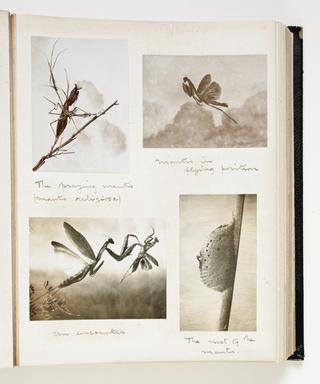
Urban, Charles 1867 - 1942
- Nationality:
- American
Charles Urban, film producer, was born on 15 April 1867 in Cincinnati, Ohio. He was the second eldest of the ten children of Joseph Urban, a sign painter, and his wife, Anna Sophie (1846–1887), daughter of Heinrich Glatz of Königsberg and his wife, Pauline. His parents were part of the German community in Cincinnati. Urban went to school until fifteen, after which he worked in stationary shops before becoming a successful book agent.
In 1889, Urban moved to Detroit, where he opened a stationary shop. During this time he became interested in Edison phonographs. In 1895 he became manager of a phonograph and Kinetoscope parlour. In 1896 Urban acquired the agency rights to the Edison Vitascope film projector for Michigan, and soon joined Edison film agents Maguire and Baucus of New York. By August 1897 he was in London as manager of Maguire and Baucus in Britain, controlling Edison's European interests.
In London, Maguire and Baucus renamed itself the Warwick Trading Company, a name that became renowned for its reliable product and emphasis on actuality, news, and travel film. Warwick cameramen were soon travelling the globe to bring moving images to audiences new to this world of wonders. In 1903, Urban broke away to form the Charles Urban Trading Company.
Urban became a figurehead for the British film industry. In 1901 inventor Edward Turner interested him in a potential three-colour cinematography system. Initial results were unsatisfactory, and shortly afterwards Turner died, but Urban acquired the patent rights and set his associate George Albert Smith to work on the project. After futile experiments with three colour filters, in 1906 Smith discovered that a two-colour system would reproduce most of the spectrum adequately, and Kinemacolor was invented, the first natural colour film process.
Urban gave the first demonstration of Kinemacolor in May 1908. Kinemacolor became Urban's greatest triumph. However, the downturn in Urban's fortunes had begun. In December 1913 a legal challenge to the Kinemacolor patent was launched by William Friese-Greene, anxious to promote his own Biocolour system. The petition was dismissed, but reversed on appeal in March 1914. Urban had lost his precious, and ultimately indefensible, monopoly on colour films.
Urban became a naturalized British citizen in 1907. He was married twice, first to Julia Lamereux Avery on 20 December 1888; the marriage ended in divorce in 1908. On 22 February 1910 he married Ada Aline Jones, née Gorecki (1868–1937). Urban adopted her daughter from her previous marriage, Anna Marguerite. He had no children of his own.
With the outbreak of war, Urban used his persuasive powers to interest British officialdom in the propagandist power of the cinema, and in late 1915 produced Britain Prepared, a documentary feature on Britain's military strength, made for the Wellington House cinema committee. Urban was then sent to the USA to promote this and other British war films. After returning briefly to Britain in the summer of 1916 to edit the masterly documentary feature The Battle of the Somme, Urban moved his business interests to the USA, where he worked with an engineer called Henry Joy on an improved colour system, to be called Kinekrom, and continued to promote British propaganda films in the USA. This latter activity yielded mixed results, causing some embarrassment to his British masters when Urban made an ill-judged approach to the Hearst press (which was widely seen to support the German cause), but he continued to handle British war films in the USA to the end of the war, and edited a propaganda newsreel, Official War Review.
Urban sought to expand his activities in the USA after the war, and conceived of a hugely ambitious scheme to bring all his various activities and huge film library together under one roof at Stanford White's imposing Cosmopolitan Magazine Building in Irvington-on-Hudson, New York, which he renamed the Urban Institute. While enthusiastically launching his plan in 1922 for a kind of audio-visual encyclopaedia, Urban was blind to the fact that a library of largely outdated short interest films would never find the necessary bookings to support such an ambitious venture, and it all collapsed into bankruptcy in 1924.
Around 1930 Urban returned to Britain. He continued for a while to pursue chimerical further fortunes, but in 1937 he donated all of his papers to the Science Museum, and the following year retired to Brighton. He died on 29 August 1942, in a Brighton-based nursing home.